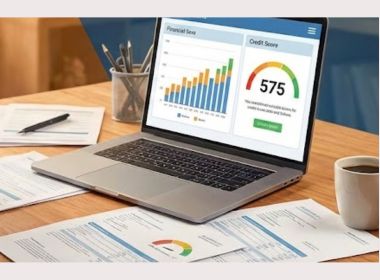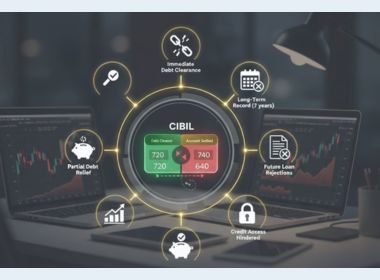Search Suggestions
- Gold Loan
- Money Transfer
- Mutual Funds

What Are Balanced Advantage Funds and How Do They Work?
When it comes to choosing an investment option that can offer good returns in the long run, mutual funds often top the list. In the last few years, mutual funds have gained immense popularity among investors. The main reason behind this is you can always find a suitable scheme, regardless of your financial goals or risk appetite.
Table of Content
- What is a Balance Advantage Fund?
- How Does It Work?
- Advantages of Balance Advantage Fund?
- How to Select the Right BAF
There are several different types of mutual funds, such as bond funds, index funds, stock funds, etc. Balance advantage funds are a combination of all these different types and are slowly becoming a preferred choice of investors.
What is a Balance Advantage Fund?
Balanced advantage funds, commonly referred to as dynamic asset allocation funds, are a type of hybrid fund. As the name suggests, these funds invest in a dynamically balanced portfolio consisting of equity, equity-related securities, debt, and money market securities. Like any other mutual fund, these are also managed by professional fund managers. Since the allocation is dynamic, it helps in minimising the risk and enhances overall returns.
Balanced advantage funds are often considered an ideal option for investors who are willing to take moderate risks. Since these funds invest in a mix of equity and debt instruments, they provide the perfect balance between potential returns and risks.
How Does It Work?
Balanced advantage funds (BAFs) work on the quantitative approach of dynamic asset allocation. Here, money is invested in equity and debt instruments along with other types of assets. The proportion of these assets is usually determined by a detailed analysis of valuation metrics, such as Price to Earnings (PE), Price to Book Value (P/B), and Earnings Yield.
Apart from this, factors like domestic economic conditions and global developments are also taken into consideration. These asset allocations are adjusted from time to time, depending on market conditions. As a result, the risk is minimised with enhanced returns in the long run.
In short, balanced advantage funds can offer you the right balance between capital appreciation and downside protection.
Here is how asset allocation is usually done for a balanced advantage fund:
- Equity: A portion of the total amount (ranging from 65% to 100%) is invested in equities. Since equities are known for their better potential for capital appreciation, they lead to higher returns.
- Debt: The remaining amount is invested in debt securities, such as government bonds, corporate bonds, money market instruments, etc.
- Cash or Cash Equivalents: Sometimes, a small portion of the total amount is kept in the form of cash or cash equivalents. This helps to meet liquidity requirements or make further investments when stock market conditions are right.
Suggested Read: 7 Common Myths About Mutual Funds
Advantages of Balance Advantage Fund?
Here are a few key benefits of making a balanced advantage fund investment:
- Better Flexibility: These funds work on the concept of dynamic asset allocation. As a result, they give you enough flexibility to make any necessary changes in your investments. You can adjust your assets between equity and debt instruments, depending on market conditions, to yield better returns.
- Hedging against Market Volatility: Balanced advantage funds help in minimising the overall risk. They reduce the exposure to equities when market conditions are unfavourable.
- Higher Returns: BAFs are known for their potential to generate higher returns as compared to traditional fixed-income investments. If you’re looking for an investment avenue that can offer better profits with less volatility, these funds are an excellent choice.
- Portfolio Diversification: Balanced advantage funds make investments across various asset classes. This can help you diversify your portfolio and reduce overall risk.
How to Select the Right BAF
Here are a few factors that need to be taken into consideration while choosing the best balanced advantage fund for you:
- Historical Performance: It is essential to analyse the performance of a particular fund over the past few years before making a selection. This gives a clear idea of how the fund has performed in various market conditions. You should always choose an option with a consistent track record of delivering stable returns.
- Expense Ratio: The fee that is being charged for managing the fund is called the expense ratio. A lower expense ratio usually translates into higher returns.
- Fund Size: This is something that helps you understand if a particular fund can handle inflows and outflows efficiently or not. A smaller fund size often results in better flexibility, while a larger fund size comes with easy liquidity.
Suggested Read: Build Your First Mutual Fund Portfolio: A Beginner's Guide
At Muthoot Finance, we offer a wide range of mutual fund schemes that can cater to the diverse requirements of investors. You can explore all the options and make a selection on the basis of your specific needs. Or, you can also visit the nearest Muthoot Finance branch for more information.
- Invest in Mutual Fund
- Systematic Investment Plan
- Mutual Fund Calculator
- Liquid Mutual Fund
- Debt Funds
- Balanced Funds
- Equity Linked Schemes
- Tax Saving Schemes
CATEGORIES
OUR SERVICES
-

Credit Score
-

Gold Loan
-

Personal Loan
-

Cibil Score
-

Vehicle Loan
-

Small Business Loan
-

Money Transfer
-

Insurance
-

Mutual Funds
-

SME Loan
-

Corporate Loan
-

NCD
-

PAN Card
-

NPS
-

Custom Offers
-

Digital & Cashless
-

Milligram Rewards
-

Bank Mapping
-

Housing Finance
-

#Big Business Loan
-

#Gold Loan Mela
-

#Kholiye Khushiyon Ki Tijori
-

#Gold Loan At Home
-

#Sunherisoch
RECENT POSTS

Understanding KDM Gold and Why it’s Banned
Know More
Gold loan boom: 3,000 new branches to open in India in 12 months
Know More
Gold Loan Boom: Rs 14.5 lakh crore market spurs NBFCs to add 3,000 branches
Know More
How BNPL Affects Your Credit Score
Know More
Inside the Muthoot money machine: How a Kerala family turned gold loans into a billion-dollar empire
Know More
Billionaire Family Turns India’s Gold Obsession Into a Fortune
Know More
What is a Cheque and its Different Types in India?
Know More
Benefits of Paying Your EMIs on Time: Why Timely Payments Matter
Know More
A Complete Guide to Report Online Fraud
Know More
How does a Personal Loan Affect your Credit Score?
Know MoreFIN SHORTS

What Are Co-Pay and Deductibles in Insurance Policies?
Know More
Should You Take a Loan Against Your Mutual Fund or SIP?
Know More
Top 5 Best Mid-Cap Mutual Funds to Watch in 2026
Know More
Are Personal Loans Right for Retirees? Key Points to Consider
Know More
What Happens to a Personal Loan After the Borrower Dies?
Know More
Best Loan Choices for Credit Scores of 580 and Below
Know More
7 Reasons Why a Gold Loan Is the Best Option for Small Businesses
Know More
10 Reasons Why People in India Prefer Physical Gold
Know More
Real Estate vs Gold: Which Is a Better Investment in India?
Know More
10 Common Mistakes That Make Investors Lose Money in Mutual Funds
Know More
10 Reasons Why Gold Has So Much Appeal in Uncertain Times
Know More
7 Ways Settling Debt Can Impact Your CIBIL Score
Know More- South +91 99469 01212
- North 1800 313 1212





